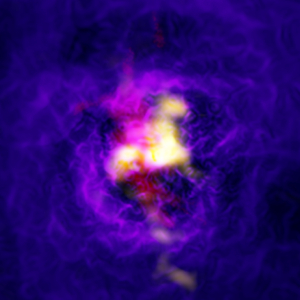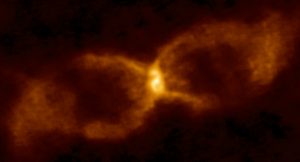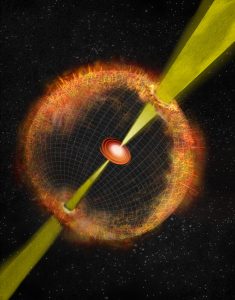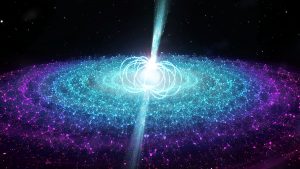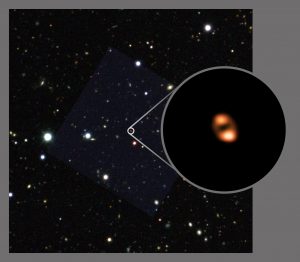ALMA has conducted a survey of protoplanetary disks, the planet-forming dust belts around young stars.
Galaxy-Scale Fountain Seen in Full Glory
A billion light-years from Earth lies one of the universe’s most massive structures, a giant surrounded by a sprawling…
When Is a Nova Not a ‘Nova’? When a White Dwarf and a Brown Dwarf Collide
Using ALMA, an international team of astronomers found evidence that a white dwarf and a brown dwarf collided in a short-lived blaze of glory.
VLA Sky Survey Reveals First “Orphan” Gamma Ray Burst
Comparing data from new, ongoing sky survey to data from previous observations reveals probable gamma ray burst that directed no gamma rays toward Earth.
VLA Discovers Powerful Jet Coming from “Wrong” Kind of Star
The VLA’s discovery of a jet of material launched from a highly-magnetic neutron star has forced rethinking a longstanding theory.
Fierce Winds Quench Wildfire-like Starbirth in Far-flung Galaxy
Astronomers using ALMA, with the aid of a gravitational lens, have detected the most-distant galactic “wind” of molecules ever observed, seen when the universe was only one billion years old. By tracing the outflow of hydroxyl (OH) molecules – which herald the presence of star-forming gas in galaxies – the researchers show how some galaxies in the early universe quenched an ongoing wildfire of starbirth.







